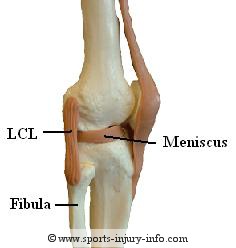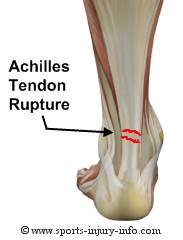Sprains and Strains
The terms sprains and strains are often used synonomously with each other, however, there is a definite difference between the two. The underlying difference lies in the type of tissues that are injured.Understanding the differences between these two injuries, the tissues involved, and the severity of the injury can be very beneficial when assessing treatment options, and recovery times.
What is a Sprain?
Sprains are injuries to ligaments. Ligaments are the primary connective tissue that attaches bones to other bones. All moveable joints within the body are created by ligaments and joint capsules. They attach two bones together, and provide static stability to the joint, as well as important proprioceptive feedback regarding joint position and joint movement.
What is a Strain
Strains are injuries to muscles and tendons. Muscles are contractile tissues that help to produce movement in the body. Tendons are connective tissues that attach muscles to bones. Tendons are considered non-contractile, meaning that they do not actively change length during movement. Strains of muscles are a very common sports injury, in all types of sports. Many different factors can lead to muscle strains, including improper warm up, poor flexibility, overuse of the muscle, poor biomechanics, and many others.Severity of Sprains
The severity is generally classified by a number, from 1-3. The severity is determined by the amount of laxity, or looseness, present within the ligament or joint capsule. This is determined by your physician or certified athletic trainer through special ligament stress tests.When a ligament is injured, fibers within the tissue are torn. This
results in a decrease in strength of the structure, as well as possibly
stretching out the ligament. When this occurs, more movement within the
joint is possible. Stress tests to determine the severity of the damage
to the ligament are measured by the amount of motion at the joint, as
well as how the ligament feels at its end range (end feel).
Grade I involves tearing of a small amount of ligament fibers,
with very little extra motion at the joint. There is also a solid end
feel with the stress tests, showing that the ligament is intact.
Grade II sprains involve tearing of about half of the ligament fibers, give or take. There may be a "mushy" or soft end feel when the ligament is stress tested, and there is more available motion at the joint during testing.
Grade III sprains involve tearing of more than half of the ligament fibers, or a complete tear of the ligament. There is an "empty" end feel, and a significant amount of increased motion during ligament testing.
Severity of Strains

Grade I strains involves very small tears to the muscle fibers, and is associated with pain during contraction of the muscle.
Grade II strains involve tearing of many more muscle fibers, and pain levels are significant with muscle contraction. There may also be a small area of the muscle that feels abnormal when palpated or touched.
Grade III strains involve a complete rupture of a muscle or tendon, with significant pain and swelling, and possibly a visible defect in the muscle.
Treating Sprains and Strains
The best treatment for sprains and strains is to follow the R.I.C.E. principles of injury treatment. Depending on your pain levels, amount of swelling, or feelings of instability, you should seek medical evaluation from your physician or certified athletic trainer.Please remember that the information on these pages is meant to help educate you regarding common sports injuries, and should not take the place of sound medical advice from a licensed physician or certified athletic trainer. If you are in pain, then the best course of action is generally to seek medical advice. Use the information on these pages to answer your questions, but go see your family physician or certified athletic trainer.
Didn't find what you were looking for? Search SII for more information...
Running Pain Solutions
Written for Runners by a runner, you'll learn a holistic approach to improving mobility, restoring normal movement and muscle activation patterns, and restoring the body and mind connection.
This Kindle Book contains a step by step program to keep you running pain free. Included are detailed instructions and illustrations for exercises to improve mobility, balance, neuromuscular control, strength and endurance. Only $7.49!
Get Your Copy Today!









